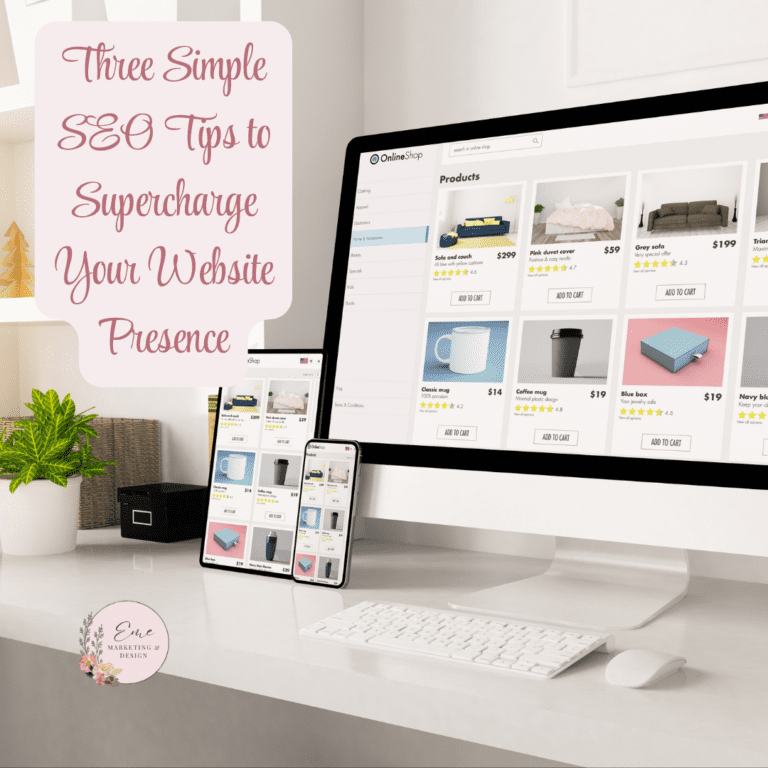
The significance of a robust online presence for small businesses cannot be overstated. With consumers increasingly turning to the internet to research products and services, a well-designed website serves as the cornerstone of any successful business strategy. However, creating effective websites involves more than just putting together a few web pages. To truly stand out in a crowded online marketplace, small businesses need to ensure that their websites incorporate essential elements that not only attract visitors but also convert them into customers.
In this blog, we delve into the core components that small business websites should possess. From intuitive navigation and responsive design to compelling content and clear calls-to-action, these elements collectively contribute to creating a user-friendly experience that fosters trust and encourages engagement. Whether you’re a budding entrepreneur or an established small business owner looking to enhance your online presence, understanding and implementing these key elements will set you on the path to digital success. Join us as we explore the ten essential ingredients that can elevate your small business website from ordinary to extraordinary.
Clear Navigation of Websites
Clear navigation is the cornerstone of a user-friendly website experience. When visitors land on your site, they should be able to easily find what they’re looking for without feeling lost or confused. A well-organized menu structure, with logical categories and subcategories, helps users navigate through your website effortlessly. By presenting information in a clear and intuitive manner, you not only enhance the user experience but also encourage visitors to stay longer and explore more of your content.
Additionally, incorporating search functionality enables users to quickly locate specific information, further streamlining the navigation process and improving overall usability.
Moreover, clear navigation doesn’t just benefit your website visitors; it also plays a crucial role in search engine optimization (SEO). Search engines use website navigation to understand the structure and hierarchy of your site, which helps them index and rank your pages more effectively. By organizing your content with clear navigation, you make it easier for search engines to crawl and index your site, ultimately improving your chances of ranking higher in search engine results pages (SERPs) and driving organic traffic to your website. Thus, prioritizing clear navigation not only enhances the user experience but also contributes to the overall success of small business websites.
Responsive Design
Responsive design is an approach to web design that ensures a website can adapt and provide an optimal viewing experience across a wide range of devices and screen sizes, including desktop computers, laptops, tablets, and smartphones. With the increasing prevalence of mobile devices in our daily lives, responsive design has become essential for delivering a seamless and consistent user experience regardless of the device being used.
Instead of creating separate versions of a website for different devices, responsive design uses fluid grids, flexible images, and media queries to automatically adjust the layout and content of a website based on the screen size and orientation, ensuring that it looks and functions well on any device.
The importance of responsive design cannot be overstated in today’s digital landscape. With more and more users accessing the internet on mobile devices, having a website that is mobile-friendly is no longer just a nice-to-have—it’s a necessity. A responsive design not only improves usability and accessibility for mobile users but also enhances search engine optimization (SEO) and boosts overall performance.
Search engines like Google prioritize mobile-friendly websites in their search results, meaning that websites with responsive design are more likely to rank higher and attract more organic traffic. Additionally, responsive design future-proofs our websites, ensuring that it remains relevant and effective as new devices with varying screen sizes and resolutions continue to emerge. In essence, responsive design is crucial for delivering a user-centric experience that meets the needs and expectations of today’s digital consumers.
Compelling Homepage On Websites
The homepage of websites serve as its digital storefront, offering visitors their first glimpse into what a business has to offer. A compelling homepage is essential for capturing the attention of visitors and guiding them deeper into the site. It should succinctly communicate the brand’s value proposition, showcasing its unique selling points and conveying a sense of professionalism and credibility. Striking visuals, such as high-quality images or videos, can instantly capture the visitor’s attention and evoke an emotional response, further drawing them into the site’s content.
Moreover, clear navigation and prominent calls-to-action should guide visitors toward their desired destinations, whether it’s exploring products and services, learning more about the company or making a purchase.
Furthermore, a compelling homepage should be designed with the user experience in mind, catering to the needs and preferences of the target audience. By understanding the demographics, interests, and behavior of their visitors, businesses can tailor their homepage content to resonate with their audience effectively. Personalization techniques, such as dynamic content and targeted messaging, can help create a more engaging and relevant experience for each visitor.
Additionally, ongoing optimization based on user feedback and analytics insights ensures that the homepage continues to evolve and improve over time, ultimately driving higher engagement, conversions, and business growth. In essence, a compelling homepage sets the tone for the entire website experience, leaving a lasting impression on visitors and compelling them to further explore what the business has to offer.
High-Quality Content On Websites
High-quality content lies at the heart of successful small business websites, serving as the foundation for engaging and informing visitors. Whether it’s blog posts, product descriptions, or multimedia content, the content on your website should be relevant, valuable, and well-crafted. By providing informative and insightful content that addresses the needs and interests of your target audience, you can establish your expertise in your industry and build trust with potential customers.
Moreover, high-quality content not only attracts visitors to your website but also encourages them to stay longer, explore further, and ultimately take action, whether it’s making a purchase, signing up for a newsletter, or contacting your business.
Furthermore, investing in high-quality content can have significant benefits for your website’s search engine optimization (SEO) efforts. Search engines like Google prioritize websites that provide valuable and relevant content to users, rewarding them with higher rankings in search results. By incorporating relevant keywords naturally throughout your content, you can improve your website’s visibility and attract more organic traffic.
Additionally, regularly updating your website with fresh and engaging content not only keeps visitors coming back for more but also signals to search engines that your website is active and authoritative, further boosting your search rankings. In essence, high-quality content is a powerful tool for attracting, engaging, and converting visitors, making it an essential element of any successful small business website.
Contact Information on Websites
Contact information is a critical component of any small business website, serving as a direct line of communication between the business and its customers. prominently displaying your contact information on every page of your website makes it easy for visitors to get in touch with you, whether they have questions, feedback or are ready to make a purchase. Providing multiple contact options, such as a business address, phone number, email address, and social media links, increases accessibility and accommodates the preferences of different visitors.
Moreover, clear and visible contact information builds trust and credibility with your audience, reassuring them that your business is legitimate and accessible should they need assistance or support.
Furthermore, beyond facilitating communication with customers, contact information also plays a role in local search engine optimization (SEO) efforts. Including your business address and phone number on your website helps improve your visibility in local search results, making it easier for potential customers in your area to find and contact you.
Additionally, incorporating a contact form allows visitors to reach out to you directly from your website, streamlining the communication process and making it more convenient for both parties. By prioritizing contact information on your website, you not only enhance the user experience but also create opportunities for meaningful engagement and interaction with your audience, ultimately contributing to the success of your small business.
Clear Calls-to-Action (CTAs) On Websites
Clear calls-to-action (CTAs) are essential for guiding visitors through your website and encouraging them to take the desired action. Whether it’s making a purchase, signing up for a newsletter, or contacting your business, CTAs serve as prompts that direct visitors toward specific goals. It’s crucial to use clear and compelling language that clearly communicates what action you want the visitor to take and why they should take it.
Additionally, CTAs should be prominently displayed on each page of your website, ideally above the fold, where they are easily noticeable and accessible to visitors. By strategically placing CTAs throughout your website and aligning them with the visitor’s journey, you can effectively guide them toward conversion and drive business growth.
Moreover, effective CTAs are visually striking and attention-grabbing, using contrasting colors, bold fonts, and compelling imagery to stand out on the page. The design and placement of CTAs should draw the visitor’s eye and make it clear where they need to click to take action.
Furthermore, A/B testing different variations of CTAs can help determine which ones resonate most with your audience and drive the highest conversion rates. By continuously optimizing and refining your CTAs based on performance data and user feedback, you can maximize their effectiveness and improve the overall success of small business websites.
Testimonials and Reviews
Testimonials and reviews are powerful social proof elements that can significantly influence purchasing decisions and build trust with potential customers. By showcasing positive feedback and experiences from satisfied clients or customers, you provide validation of your products or services and demonstrate your credibility and reliability as a business. Testimonials offer real-life examples of how your offerings have benefited others, helping to alleviate any doubts or concerns that prospective customers may have.
Additionally, including specific details such as the customer’s name, photo and affiliation (if applicable) adds authenticity and credibility to the testimonials, further reinforcing their impact.
Furthermore, beyond instilling trust, testimonials and reviews also contribute to your website’s search engine optimization (SEO) efforts. User-generated content, such as reviews and testimonials, adds fresh and relevant content to your website, which search engines like Google favor when determining search rankings. Positive reviews also signal to search engines that your business is reputable and trustworthy, potentially improving your website’s visibility in search results.
By actively soliciting and showcasing testimonials and reviews on your website, you will enhance your credibility with potential customers, boost your online presence and attract more organic traffic.
Visual Elements of Websites
Visual elements play a crucial role in enhancing the aesthetic appeal and user experience of small business websites. High-quality images, videos, infographics, and other multimedia content help to capture visitors’ attention and convey information in a more engaging and memorable way. Compelling visuals can effectively communicate your brand’s personality, values, and offerings, helping to differentiate your business from competitors and leave a lasting impression on visitors.
Additionally, incorporating visual elements that align with your brand identity and messaging can help to reinforce brand recognition and build a stronger connection with your target audience.
Moreover, visual elements not only enhance the aesthetic appeal of your website but also contribute to its functionality and usability. Well-organized and visually appealing layouts can improve navigation and make it easier for visitors to find the information they’re looking for. Interactive visual elements, such as sliders, galleries, and interactive maps, can further engage visitors and encourage them to explore more of your content.
Furthermore, optimizing visual elements for fast loading times and responsive design ensures a seamless experience across different devices and screen sizes, enhancing accessibility and user satisfaction. By strategically incorporating visual elements into your website design, you can create a more immersive and impactful user experience that resonates with your audience and drives business growth.
SEO Optimization of Each Website Page
SEO optimization is essential for ensuring that your small business website is visible and easily discoverable by potential customers on search engines like Google. By strategically incorporating relevant keywords, optimizing meta tags and descriptions, and improving site speed and mobile-friendliness, you can enhance your website’s ranking in search engine results pages (SERPs) and attract more organic traffic.
Keyword research plays a crucial role in identifying the terms and phrases that your target audience is using to search for products or services similar to yours. By strategically integrating these keywords into your website’s content, headers, and meta tags, you can improve its relevance and authority in the eyes of search engines, ultimately boosting its visibility and driving more qualified traffic.
Furthermore, SEO optimization involves optimizing various technical aspects of your website to improve its performance and user experience. This includes optimizing site speed, improving site architecture and navigation, and ensuring mobile responsiveness, all of which contribute to better usability and higher search engine rankings.
Additionally, creating high-quality, relevant content that addresses the needs and interests of your target audience can help to attract inbound links and improve your website’s authority and credibility in the eyes of search engines. By continually monitoring and optimizing your website’s SEO performance, you can ensure that it remains competitive and visible in today’s crowded online marketplace, ultimately driving more traffic, leads, and sales for your small business.
Analytics and Tracking
Analytics and tracking are essential components of successful small business websites, providing valuable insights into how visitors interact with your site and helping you make data-driven decisions to improve its performance. By implementing analytics tools such as Google Analytics, you can track key metrics such as website traffic, user behavior, conversion rates, and more. This data allows you to gain a deeper understanding of your audience, including where they’re coming from, what pages they’re visiting, and how they’re engaging with your content.
Armed with this knowledge, you can identify areas for improvement, optimize your website’s performance, and tailor your marketing efforts to better meet the needs and preferences of your target audience.
Moreover, analytics and tracking enable you to measure the effectiveness of your marketing campaigns and initiatives, allowing you to determine which channels are driving the most traffic and conversions. By tracking the performance of your website over time, you can identify trends and patterns, measure the impact of changes and updates, and make informed decisions to drive continuous improvement.
Additionally, setting up goals and conversion tracking allows you to measure the success of specific actions or objectives, such as form submissions, newsletter sign-ups or purchases. By regularly monitoring and analyzing your website’s analytics data, you can gain valuable insights that inform your strategic decisions, maximize your return on investment (ROI) and drive greater success for your small business.
Final Thoughts on Critical Elements for Websites
A successful small business website incorporates a multitude of essential elements that work together to create a compelling online presence. From clear navigation and responsive design to high-quality content and compelling calls-to-action, each component plays a vital role in attracting visitors, engaging them effectively, and driving conversions. Clear contact information, testimonials, and reviews build trust with potential customers, while visual elements enhance the aesthetic appeal and usability of the website. Additionally, SEO optimization and analytics tracking ensure that the website remains visible, competitive, and continuously optimized for better performance and user experience.
By prioritizing these essential elements and continually refining and optimizing your website based on user feedback and analytics insights, you can create a powerful online platform that not only showcases your business effectively but also drives meaningful results. Ultimately, a well-designed and strategically optimized small business websites serve as a valuable asset that helps you connect with your target audience, build credibility and trust, and achieve your business goals in today’s digital landscape. With these ten essential elements in place, your small business website can become a powerful tool for driving growth, attracting customers and achieving success in the competitive online marketplace.
Next Steps
Partnering with Eme Marketing & Design for your small business website needs is the next logical step toward achieving your online goals. With over 20 years of experience in updating/refreshing, creating, analyzing and managing websites, we bring a wealth of knowledge and expertise to the table. Our team understands the unique challenges and opportunities that small businesses face in the digital realm, and we are committed to helping you navigate them effectively.
By choosing to work with Eme Marketing & Design, you can expect a tailored approach that prioritizes your specific needs and objectives. Whether you’re looking to refresh your existing website, create a new one from scratch, or optimize your online presence for better performance, we have the skills and resources to deliver results. Our comprehensive suite of services covers everything from design and development to SEO optimization, analytics tracking, and ongoing maintenance and support. With our collaborative approach and dedication to excellence, we’ll work closely with you every step of the way to ensure that your website not only meets but exceeds your expectations. Let Eme Marketing & Design be your trusted partner in realizing the full potential of your small business website and achieving success in the digital age.




